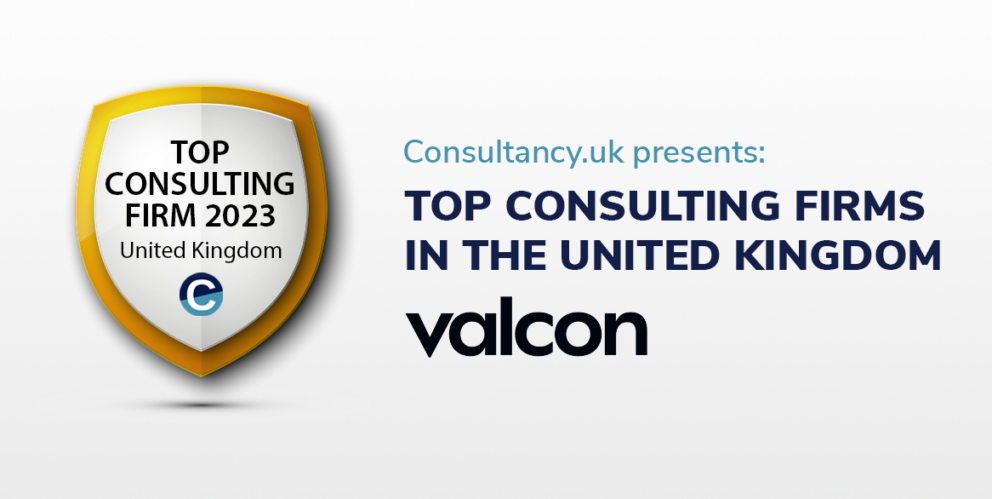Consulting
Organisations are in a constant state of evolution – navigating leadership shifts, digital transformation or operational change – which could mean designing and implementing new systems, honing processes or developing a new strategy.
Valcon provides consulting support to help clients protect and increase their margins, optimise their operational performance and improve productivity. We work closely with clients to map their vision, define the programme to achieve it and deliver the programme successfully, using a blend of Valcon’s consulting, data and technology expertise.
From large-scale transformations to specific issues, Valcon can step in at any stage of the development journey. We adapt and flex our consulting, technology and data teams to provide direction, design and delivery to get the right results.


Valcon’s six consulting services include:
Strategic advisory
For clients considering an acquisition, retuning their commercial strategy, or setting up the right governance to deliver a transformation programme, Valcon’s consultants support at every step of the journey.
Operations advisory
Fine-tuning business operations is critical. Valcon helps clients optimise operations, from supply chain planning to commercial effectiveness and organisational design.
IT advisory
Optimising IT operations is key and Valcon advises on enterprise architecture, data strategy and management and IT operations design.
Transformation consulting & acceleration
Effectively managing transformation and ensuring it continues apace is vital. This incorporates PMO (project management office), programme planning and agile and waterfall project management.
Process consulting & acceleration
To get the best out of a change initiative, ensuring process are operating at an optimal level is key. This can involve elements such as process design, business analysis and operational steering.
Change consulting & acceleration
This stage ensures optimised change management, smooth implementation and sustainable change. Once the transformation is complete, a period of post implementation after-care follows.
Martin Wells
Partner

Insights
Case Studies
Other services
Data
Every company has data challenges – big or small, simple or complex. Solving these requires flexibility and in-depth knowledge of data solutions and techniques. We help to define our clients’ data strategies and implement best-fit data solutions.
Technology
Technology is one of the biggest drivers of change. With our experience and capability, we design, build and manage innovative and high-quality solutions which contribute to the operational performance and digital transformations of our clients.

Get in touch
Leave us a message and we will get back to you.














